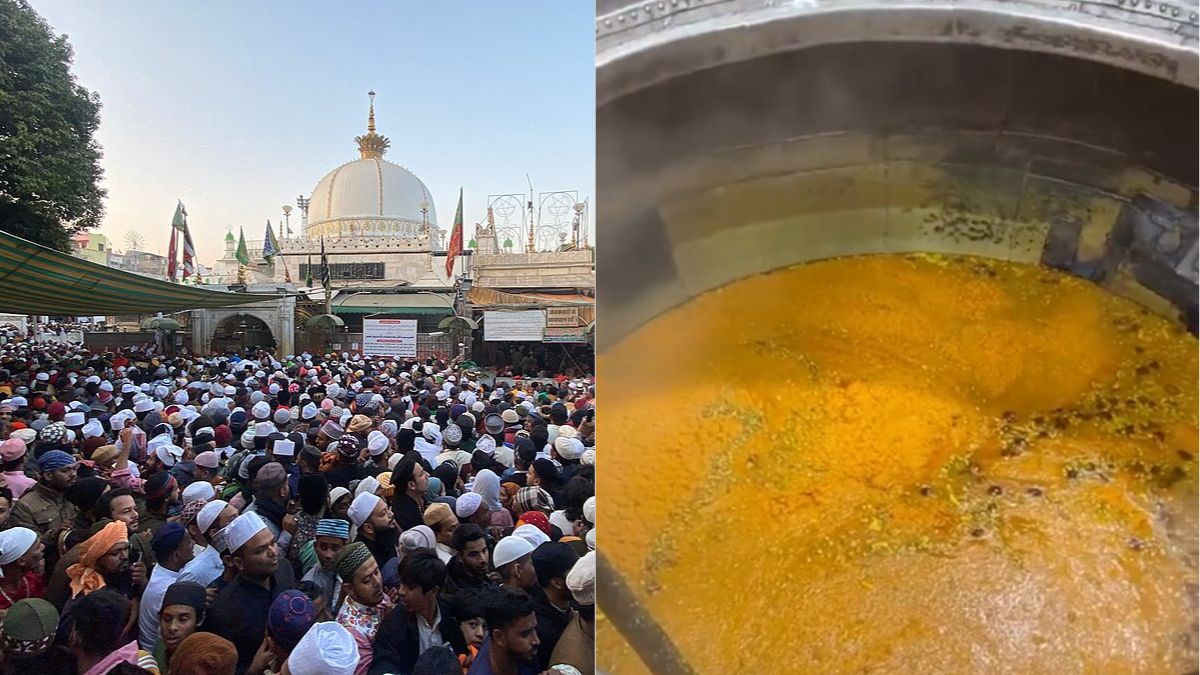The tomb of Moinuddin Chishti, Ajmer Sharif Dargah, also called Ajmer Dargah, is one of the holiest sites of prayer in India for people of all faiths, not just Muslims. As the ultimate resting place of Khwaja Moin-ud-din Chisti, it has played a significant role in promoting Islamic moral and spiritual principles among the general public. The deg at Ajmer Sharif Dargah is used to make 4,800 kg of meethe chawal for the pilgrims who come there. Recently, Chef Vikas Khanna shared a video of making meethe chawal at deg of Ajmer Sharif Dargah.
Watch: Chef Vikas Khanna Shares Video Of Meethe Chawal At Ajmer Sharif Dargah
The famous Sufi saint Khwaja Moin-ud-din Chisti devoted his life to helping the underprivileged and oppressed. Millions of people travel to the shrine each year because it is revered by people of all faiths.
Humayun, the Mughal Emperor, constructed Ajmer Sharif, which explains the elaborate Mughal architecture. There are several components to the Dargah, including Daalaans, courtyards, and graves. Nizam Gate, Buland Darwaza, Jama Masjid, Aulia Masjid, Dargah Shrine, Mehfilkhana, and a few more notable buildings are the most notable of these constructions.
In the shrine’s inner courtyard, two enormous cauldrons are seen. These 2240 kg and 4480 kg size containers are used to prepare delicious treats on special occasions. Recently, Chef Vikas Khanna shared a video of making meethe chawal at the deg. It started with pouring haldi, water, and rice in the deg with sugar and ghee. There is fire which helps to heat the vessel.
The enormous amount of food prepared in holy kitchens to feed the millions of visitors to sacred locations never ceases to astound people. Travellers from all over the world come to this dargah to partake in a delicious dinner prepared in the expansive holy kitchen.
Also Read: Rajasthan To Start Its First Cruise Service From Ajmer’s Ana Sagar Lake From March
History Of This Holy Site
In the century that followed the preacher’s passing in March 1236, the dargah rose to great veneration. The most significant Sunni monarchs of the time respected the mausoleum, which was revered by people from all social strata. In honour of the saint’s memory, the 13th-century Sultan of Delhi, Iltutmish, made a well-known pilgrimage to the tomb in 1232.
During his reign, Mughal Emperor Akbar paid at least fourteen visits to the temple. In 1579, he also rebuilt the sanctum sanctorum of the mausoleum. Later on, Jahangir, Shah Jahan, and Jahanara refurbished the building. The Maharaja of Baroda built an exquisite canopy over the dargah in 1800.
Constructed in 1532, the white marble dome of Chishti’s shrine is still visible today. On the dargah’s northern wall, this date is written in gold letters. The architecture is Indo-Islamic, and the dome is decorated with a gold crown and a lotus.
Today, thousands of Sunni Muslims go from all over the Indian subcontinent to visit the grave of Moinuddin Chishti, making it one of the most visited places for religious purposes. The location also draws a lot of Hindus, who have been worshipping the saint since the Middle Ages.
Also Read: From Mahakal To Ajmer Sharif Dargah, Sara Ali Khan Recently Visited These Places Of Worship
Comment below and tell us if you have ever visited Ajmer Sharif Dargah.
Cover Image Courtesy: Wikimedia & Vikas Khanna/ Instagram
For more such snackable content, interesting discoveries and latest updates on food, travel and experiences in your city, download the Curly Tales App. Download HERE.
Good news! We are on WhatsApp! Subscribe to Curly Tales WhatsApp Channel to stay up-to-date with exclusive content and BTS. Join HERE.

